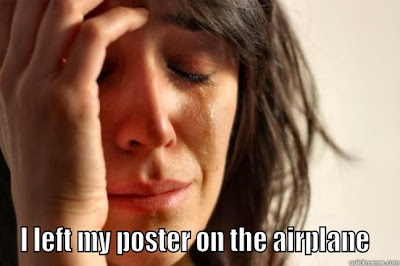I’ve talked about fabric posters before, but Labhacks might, just might, have the best fabric poster yet. They say it’s printed on Spoonflower performance knit, and is presumably ordered from the Spoonflower website. They claim it hangs straight, but they don’t show a clear picture of the whole poster on the poster board.
Dr. Doyenne saves me the problem of explaining the fine points of typesetting hyphens, dashes, and minuses.
Raw is a new service (not even in beta yet) to turn data into vector based graphics. The creators say:
(It is a sketch tool, useful for quick and preliminary data explorations as well as for generating editable visualizations. ... Even if Raw is an online app, uploaded data are not sent or stored anywhere. Feel safe to use confidential data because they will stay on your computer.
Before you submit a poster, you usually have to submit an abstract. Dr. Theron has advice for how to write an abstract that won’t embarrass you.
I like this quote from Facebook’s Maria Giudice:
What makes a good designer?
The characteristics that I think designers posses – I call them superpowers. The first thing is empathy. When you go to art or design school you learn how to be empathetic, and that serves you well in business.
Empathy. Yes. This is something I think was fumbling towards when I ask people to respect their audience’s time, eyesight, and so on.
Bug Girl has advice for introverts on how to tackle scientific conferences.
Don’t know anyone? It’s easiest to approach another person who’s standing alone. Then you have an immediate opening—“I don’t know anyone here—do you?”
DrugMonkey would like you all to conduct an observational study at the next conference you go to:
Next time you are at your favorite scientific meeting, take a look at the trainees that are standing forlornly, uncomfortably alone at their posters. Contrast them with the young trainees that have an audience stacked three deep in a semicircle.
Do you notice any differentials in male/female, attractive/unattractive, white/black/asian/latino/etc ?
Nick Wan reminds us of the importance of proofreading:
My poster’s printed. Turns out, there’s a misspelling: “Assess” not “Asses.”
Which brings to mind this #SfNmeme from Aiquintero:
#SfNmemes took off on Twitter. There are too many to share all of them, but here are a couple of favourite poster-related ones: A tip of the hat to Aiquintero and for this:
Mark G. Baxter:
Neuropolarbear:
Aiquintero:
That Aiquintero is one busy person:
NeuroPolarBear:
Got a poster-related meme or macro? Submit it to the Dejected Poster Face Tumblr!






















